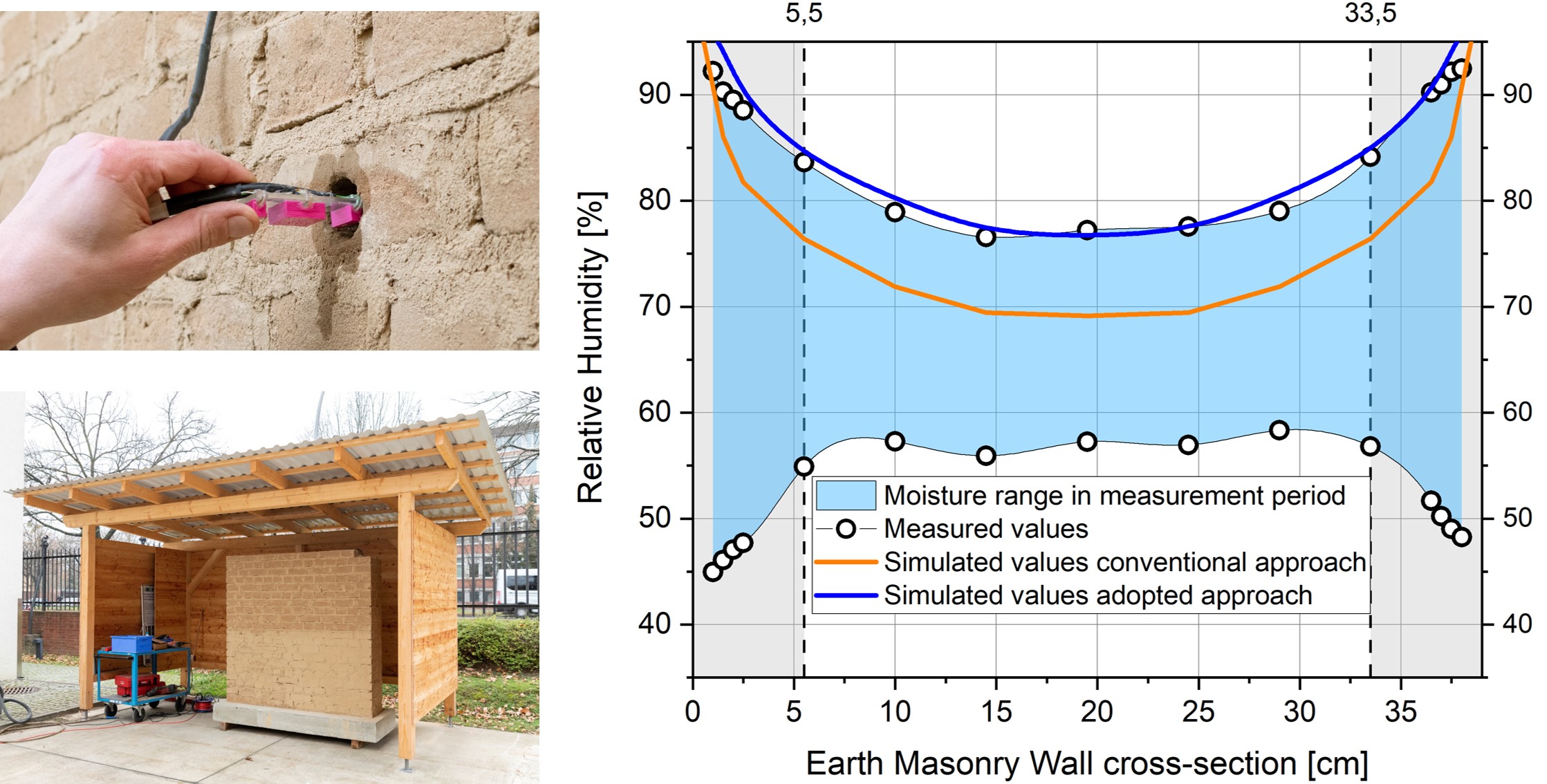
Setup of long-term moisture measurements and comparison of measured values with hygrothermal simulations (WUFI), with and without adjustment of moisture-related input parameters
Source: BAM
Earthen construction is among the oldest building methods of humankind – today, in the context of the transition toward climate-friendly and resource-efficient construction, it is experiencing a scientific and technological renaissance. However, the durable and standards-compliant use of load-bearing earth structures requires robust, empirically validated design principles. A key contribution to this has been made by the recently published study “Quantification of moisture content in earth block masonry under natural climatic conditions.
For the first time, in a field study lasting more than 18 months, the moisture behaviour of earth block masonry under natural weather conditions was systematically and high-resolution monitored. An innovative measurement approach was applied, combining capacitive moisture sensors with NMR relaxometry. At the same time, hygrothermal material properties were assessed in the laboratory using adapted or newly developed test methods to account for the water-solubility of earth building materials.
Based on these extensive datasets, hygrothermal simulations could be carried out and precisely calibrated using the measurement results. Particular attention was given to material-specific characteristics such as pore space changes caused by swelling, which had previously led to significant discrepancies between simulation and reality. By carefully adjusting relevant parameters such as capillary water absorption or water vapour diffusion resistance, the accuracy of predictions was significantly improved.
The study thus represents not only a milestone in understanding the moisture behaviour of earthen masonry – it also provides the experimental foundation for the new semi-probabilistic design concept of DIN 18940: Load-bearing earthen masonry – design, calculation, and execution. For the first time, this standard permits the use of load-bearing earth masonry walls in buildings up to 13 m in height and systematically accounts for moisture influences through so-called service classes.
A central finding: Under Central European climate conditions, externally insulated wall constructions (e.g., ETICS or ventilated curtain walls) in heated buildings reach a maximum material moisture corresponding to a relative humidity of approx. 65% – significantly lower than previously assumed values. This allowed the moisture limits defined in DIN 18940 to be empirically validated for the first time.
The results directly contribute to the standardization and quality assurance of earthen building materials. As part of the comprehensive standards framework DIN 18940–18948, developed jointly with industry, research, and expert committees, they play a central role in transforming the construction sector into a climate-friendly, resource-efficient, and future-proof industry. The study exemplifies how scientifically grounded research can enable the standards-compliant integration of new, low-carbon building materials such as earth into modern structural engineering.
In doing so, it aligns directly with BAM’s strategic priorities in the field of Green Intelligent Building: the systematic investigation and normative safeguarding of innovative, circular materials is a prerequisite for the development of sustainable, digitally supported building products. The combination of high-resolution measurement technology, adapted testing methods, and simulation-based modeling demonstrates how disruptive innovations in construction can be made technically safe and reliable – a decisive step toward a climate-neutral, intelligent building stock.
Quantification of moisture content in earth block masonry under natural climatic conditions
Philipp Wiehle, Michelle Härder, Christoph Strangfeld
Construction and Building Materials, Volume 459, 2025


